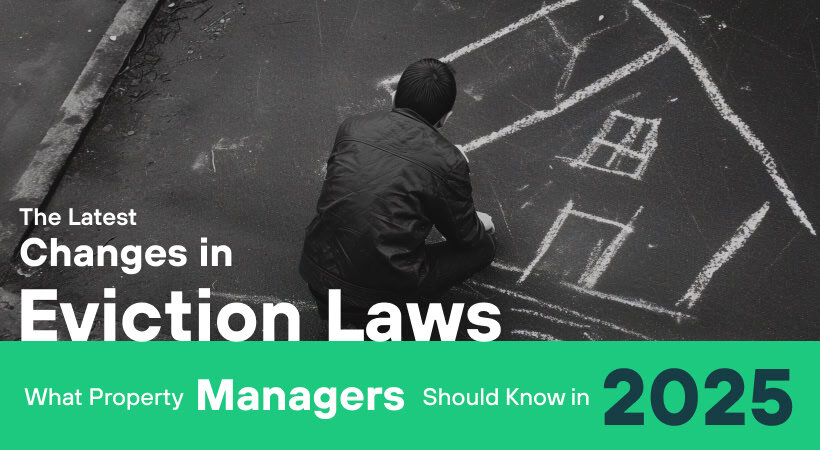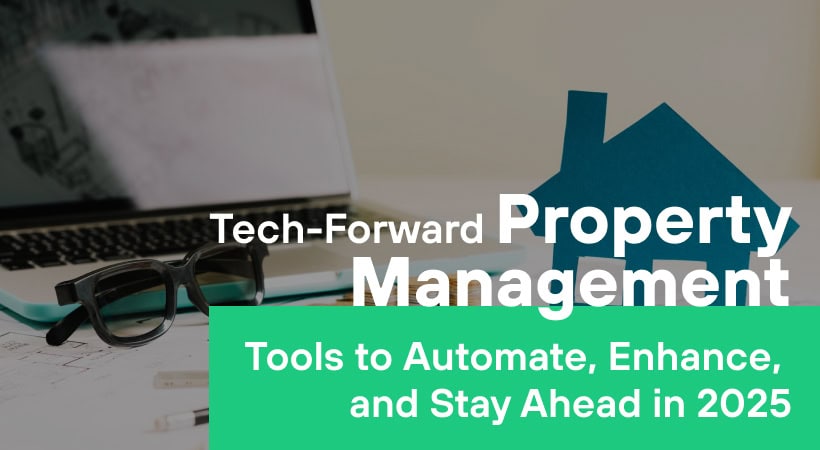Key Takeaways
Understand the components and significance of cash flow in property management.
Learn how to calculate and interpret Net Operating Income (NOI).
Identify common financial pitfalls and how to avoid them.
Utilize financial reports to assess property performance effectively.
Implement best practices for accurate financial tracking and reporting.
Let’s be honest, most of us didn’t get into property management because we were excited about financial reports. You probably jumped (or stumbled) into this industry because you love real estate, enjoy working with people, or saw an opportunity to build a rewarding career. Then suddenly, you’re staring at a stack of financial reports wondering what story these numbers are trying to tell you.
I’ve been there. When I first started managing multifamily properties, the financial side felt like learning a new language. But here’s the thing – understanding your property’s financial performance isn’t just about pleasing your owners or lenders. It’s about having the power to make informed decisions that can dramatically improve your property’s performance and your career trajectory.
Why Financial Reporting Matters in Multifamily Management
Think of financial reports as your property’s vital signs. Just like a doctor uses various tests to understand a patient’s health, we use different financial reports to understand our property’s performance. Without this understanding, we’re essentially managing blind – and in an industry where small decisions can impact property value by millions, that’s not a position any of us want to be in.
But here’s the good news: you don’t need an accounting degree to become proficient in multifamily financial reporting. What you need is a clear understanding of the fundamentals and how they apply to our unique industry. That’s exactly what we’re going to cover in this guide.
The Different Flavors of Success: Understanding Reporting Preferences
One of the first things you’ll notice in multifamily management is that different stakeholders want to see different reports. It’s like serving a meal – everyone has their preferred way of digesting information:
- Management Companies: Often focus on operational metrics and month-over-month comparisons
- Lenders: Zero in on debt service coverage ratios and NOI
- Investors: Want to see cash flow and return on investment
- Asset Managers: Look at comprehensive performance metrics including both financial and operational KPIs
The key is understanding which reports tell which story, and how to present the right information to the right audience.
Cash vs. Accrual: Two Ways to Tell Your Property’s Financial Story
Think of this like two different cameras capturing the same scene. Both are accurate, but they show different perspectives of your property’s financial reality.
Cash Basis: The “Show Me the Money” Approach
Cash basis accounting is like your bank account – it only records money when it actually moves. When a resident pays rent, you record it. When you pay a vendor, you record it. Simple, right?
Benefits of cash basis:
- Easier to understand and track
- Shows actual cash position
- Perfect for smaller properties
- Preferred by many private owners
Accrual Basis: The “Big Picture” View
Accrual accounting is more like watching a movie instead of looking at snapshots. It records income when it’s earned and expenses when they’re incurred, regardless of when money changes hands.
Benefits of accrual basis:
- Better matches income with related expenses
- Required for larger properties and most institutional owners
- Provides a more complete picture of financial health
- Better for long-term financial planning
Essential Financial Reports in Multifamily Management
Cash Flow Report: The King of Financial Reports
Think of your Cash Flow Report as the ultimate financial GPS – it shows exactly where your money came from and where it went. This report includes:
- Operating income and expenses
- Other income and expenses
- Changes in assets and liabilities
- Net cash position
Pro Tip: Pay special attention to your “below the line” items – these can often hide important expenses that impact true property performance.
Income Statement (P&L): The Story of Operations
Your Income Statement is like a report card for your property’s core operations. It focuses on:
- Rental income
- Other operating income
- Operating expenses
- Net Operating Income (NOI)
What makes this report special is its focus on pure operations, excluding owner-specific costs like debt service. This makes it perfect for:
- Property valuations
- Performance comparisons
- Transaction due diligence
Rent Roll: Your Occupancy Bible
The Rent Roll is your property’s guest list – it tells you who’s there, who’s leaving, and who’s paying what. Key components include:
- Unit-by-unit occupancy status
- Lease terms and rates
- Market rent vs. actual rent
- Delinquency indicators
- Lease expiration timing
Gross Potential Rent (GPR): Your Revenue Ceiling
GPR shows you what your property could earn if:
- Every unit was rented
- All residents paid on time
- You achieved market rates for all units
This report helps you:
- Identify revenue opportunities
- Track leasing performance
- Set realistic budgets
- Measure economic occupancy
Balance Sheet: Your Property’s Net Worth Statement
Think of the Balance Sheet as your property’s financial snapshot, showing:
- Assets (what you own)
- Liabilities (what you owe)
- Equity (net worth)
This report is crucial for:
- Understanding your property’s overall financial position
- Tracking long-term financial health
- Managing debt and assets
Aged Receivables: Your Collections Dashboard
This report is like a heat map of your collections efforts, typically showing past due amounts in buckets:
- Current
- 30 days past due
- 60 days past due
- 90+ days past due
Pro Tip: Keep this report handy during weekly collections meetings to prioritize your team’s efforts.
General Ledger: The Ultimate Transaction Record
Think of your GL as your property’s financial diary. Every single transaction gets recorded here, making it:
- Your go-to source for transaction details
- Perfect for audit trails
- Essential for transparency with owners
Budget Comparison: Your Performance Scorecard
This report puts your promises next to your performance, showing:
- Monthly actual vs. budget figures
- Year-to-date comparisons
- Variance analysis
- Trending information
Leasing Activity Report: Your Marketing and Sales Dashboard
Think of this as your leasing team’s vital signs monitor. This comprehensive report breaks down your entire leasing funnel:
- Lead generation metrics
- Show rates and appointment statistics
- Application submissions
- Lease signings
- Move-ins and move-outs
- Unit type preferences
Pro Tip: Use the unit type breakdown to identify which floor plans are most popular and adjust your marketing strategy accordingly. If your one-bedrooms are flying off the shelf while two-bedrooms sit vacant, you might need to adjust your pricing strategy or marketing focus.
Understanding T12: The Rolling Year View
The Trailing 12 (T12) is like a financial time machine, showing your property’s performance over the past 12 months. This rolling view is valuable because it:
- Smooths out seasonal variations
- Shows recent historical performance
- Helps identify trends
- Supports accurate valuations
Pro Tip: Owners, brokers, and potential buyers will typically look for this report first. Also, if you are thinking about taking a new commnity on, this is a great report to help you get a feel for the asset’s performance, areas in need of optimization, as well as what type of management fee you can charge.
Bringing It All Together: Making Financial Reports Work for You
Remember, financial reports aren’t just paperwork – they’re tools that help you:
- Make better decisions
- Identify opportunities
- Spot problems early
- Communicate effectively with stakeholders
The key is knowing which report to use when, and how to extract the insights that matter most for your property’s success.
Here’s a real-world example: Let’s say your occupancy is steady at 95%, but your NOI is declining. Your Income Statement might show stable revenue, but your Aged Receivables report reveals increasing delinquencies. Meanwhile, your Budget Comparison report shows utility expenses creeping up. Now you have a clear picture: it’s time to focus on collections and investigate those utility costs.
Real-Time Reporting: Your Early Warning System
Here’s a secret that separates top-performing managers from the pack: they don’t wait until month-end to review their reports. Think of your reports as a radar system, not a rearview mirror. Used proactively, they can help you spot and address issues before they become problems.
Mid-Month Budget Check-Ins
By the 15th of each month, you should be:
- Comparing actual revenue to budgeted expectations
- Checking for missing vendor invoices or unexpected expenses
- Reviewing utility bills and other variable costs
- Identifying any budget variances that need attention
For example, if you’re expecting a $5,000 landscaping bill but don’t see it posted by mid-month, you can follow up with your vendor and accounting team to ensure it hasn’t been lost in the shuffle.
Weekly Leasing Pipeline Review
Your Leasing Activity report isn’t just a month-end summary – it’s a weekly action tool:
- Monitor lead volume trends to spot marketing issues early
- Track show-to-lease conversion rates in real-time
- Identify unit types that might need special attention
- Adjust marketing spend based on current performance
If you notice your lead volume dropping, you can adjust your marketing strategy immediately rather than waiting until you’ve missed your occupancy goals. This empowers you to be proactive, not reactive, something that no doubt is missing with many multifamily management companies and your clients will appreciate.
Daily Collections Monitoring
Use your Aged Receivables report as a daily guide:
- Track new delinquencies as they occur
- Monitor payment plan compliance
- Identify residents who might need early intervention
- Guide your collections team’s daily priorities
Proactive Maintenance Cost Control
Regular review of your General Ledger can help you:
- Spot unusual maintenance patterns
- Identify potential warranty issues
- Track supply costs and usage
- Plan preventive maintenance more effectively
Pro Tip: Create a weekly reporting dashboard that pulls key metrics from these various reports. This gives you a quick snapshot of your property’s vital signs without waiting for month-end closing.
Next Steps in Your Financial Mastery Journey
Understanding financial reports is a journey, not a destination. Start with these basics:
- Learn to read each report type
- Understand how they connect
- Practice identifying trends
- Use reports to support your decisions
Remember, every successful multifamily manager started exactly where you are. The difference between good and great often comes down to understanding these financial fundamentals and using them to drive better property performance.
Keep this guide handy, and don’t hesitate to dive deeper into any area that impacts your property’s performance. Your growing financial expertise will make you a more effective manager and a more valuable asset to your organization.
Want to level up your financial management skills? Join our community at Multifamily Manager Pro for more in-depth training, templates, and peer support!












